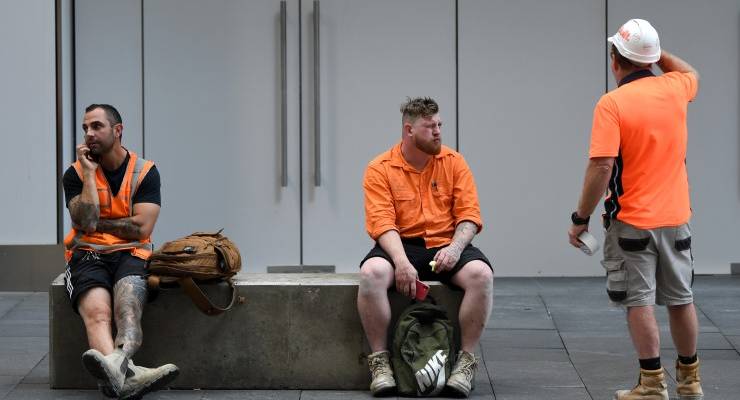
While the May unemployment numbers released this morning were expected to be bad, they ended up a little worse than feared.
Unemployment rose to 7.1% seasonally adjusted in May, off an upwardly revised April figure 0f 6.4%, as a net 227,000 jobs were lost in the month — 90,000 full-time positions and nearly 140,000 part-time positions.
A total of 835,000 people have lost their jobs since the pandemic lockdown began in March, taking unemployment to its highest level since 2001.
The numbers would have been significantly worse but for another big fall in participation, with the participation rate now down to 62.9%, more than three points below 2019 levels and the lowest level since the 1990s. And while female participation fell again, male participation slumped by even more, perhaps indicating the changing nature of job losses after the initial surge of unemployment hit services industries.
Victoria and Queensland saw particularly sharp jumps in unemployment, with rises from 6% to 6.9% and 7.0% to 7.9%, respectively. NSW remains relatively low, at 6.4%, along with Tasmania, while WA is now over 8%.
Nonetheless, there are signs of stabilisation: hours worked only fell 0.7% compared to 9.5% in April, while average hours worked was around 30.4 hours per week, a rise from 30.1 hours in April. The ABS said in its analysis that almost 2.3 million people “were affected by either losing their job between April and May, or working reduced hours for economic reasons in May”.
That was an improvement of around 400,000 from the comparable 2.7 million reported in April. But it was still much higher than those who gained jobs in May (yes, job creation continues even in the toughest of economic times).
The ABS also found that around 1.55 million people worked either fewer than their normal hours of work, or worked no hours at all, for “economic reasons” (that is, they were stood down, there was insufficient work or no work available). But of that 1.55 million, over 360,000 did no work at all in May, sharply down in the 750,000 plus reported in April and 1.2 million people did some work of any kind, up from 1 million in April.
The jobs market is bleaker — but it may not get too much bleaker before, hopefully, a recovery sets in.









I still can’t work out how unemployment percentages are calculated to arrive at such a low percentage rate. The number of unemployed people has more than doubled yet the percentage has not.
Why was this cut’n’paste even published?
It sez SFA and that little badly.
Is not journalism supposed to be finding out what the powerful do not want known?
This is stenography, not a single insight nor unique comment.
Why the illustration of the article of the stereotype “worker” portrayed as high-vis clad male construction workers. It’s generally acknowledged that women have borne the brunt of the reduction in employment over the past three months. If you must indulge in stereotypes, could you not find an AAP image of a PA, waitress or shop assistant?